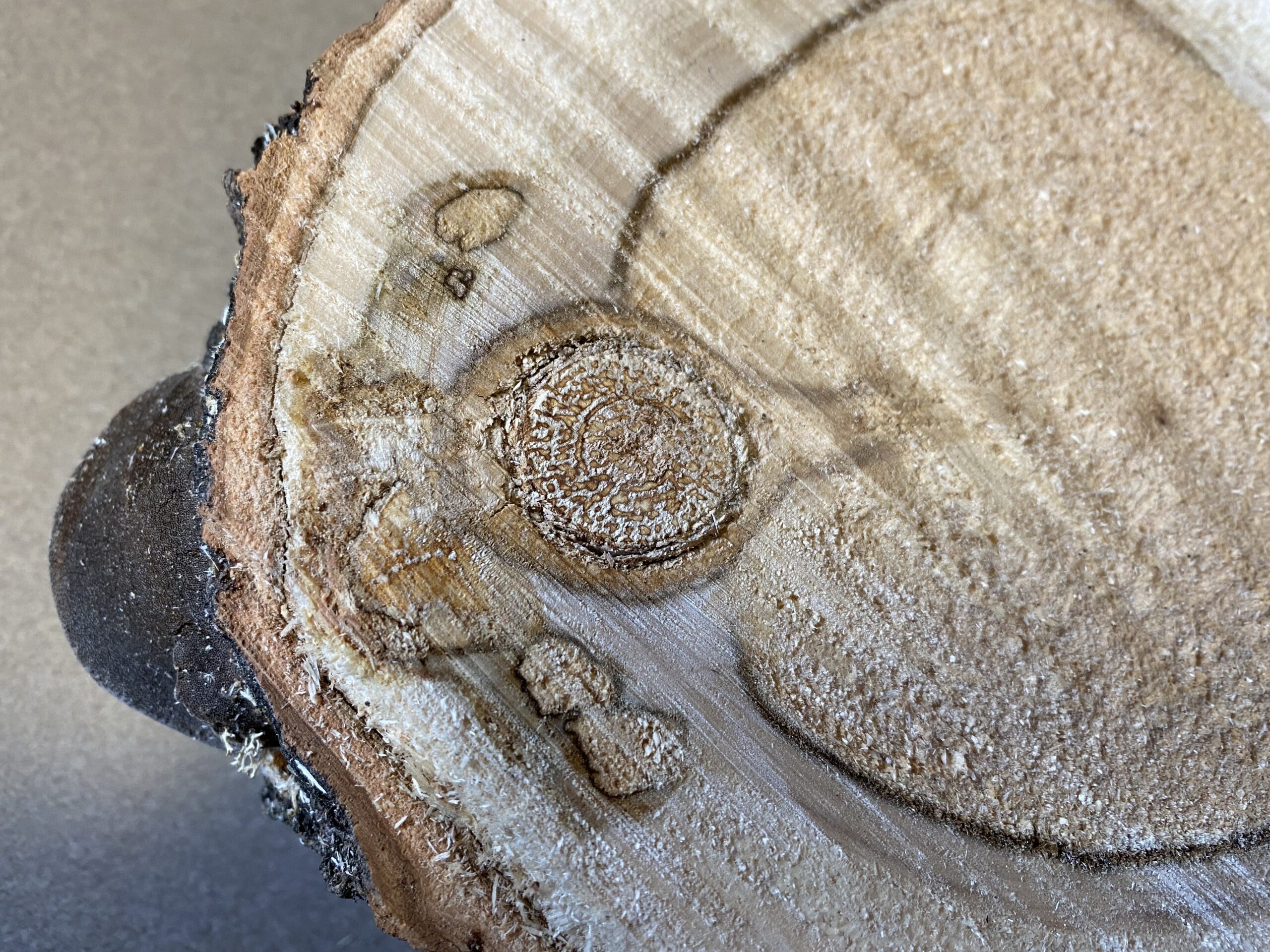By Linda Williams, DNR Forest Health Specialist, Woodruff
Linda.Williams@wisconsin.gov or 920-360-0665.
White trunk rot (Phellinus tremulae), sometimes called aspen trunk rot, is a fungus that causes decay columns to form in aspen. The fungus enters the tree through branch stubs, wounds or small dead branches that remain on the tree. Perennial conks, or fungal bodies, then grow from these sites.

White trunk rot causes decay in aspen trees. Note the conk (fruiting body) from the fungus on the left side of the pic. Photo: Wisconsin DNR
Most trees can compartmentalize decay to stop it from actively invading new growth. Still, the white trunk rot fungus can overcome the compartmentalization of aspen and continue to spread. Younger, faster-growing trees are less susceptible to the disease. Typically, the likelihood of white trunk rot increases with age, but younger trees can also be infected.
Trees growing on good sites will generally have less decay, although it will often still be present. Trees on poor sites that grow slower will have more decay within the tree and may even be killed by the fungus as it continues to invade new tissue.
Decay columns can extend 8-12 feet both up and down a tree from conks, which develop readily and are common on infected trees. Therefore, conks can be used to monitor stands for management. Although a tree’s initial conk takes some time to develop, more conks along the trunk generally mean longer decay columns and more extensive decay within the tree.
When an aspen stand has a high percentage of infected trees, the management recommendation is generally to harvest the stand, allowing it to regenerate. When aspen is growing in a yard, near houses or in areas where hazard trees are a concern, it can be prudent to remove aspen with conks, as they indicate a column of decay within the tree, creating potential weakness and failure. Trees with white trunk rot can be utilized by wildlife, so leaving some for this purpose may be desirable in some situations.

This series of photos shows a white trunk rot conk (left), which was then peeled to show the decay and start of the stain column (right). Photo: Wisconsin DNR

